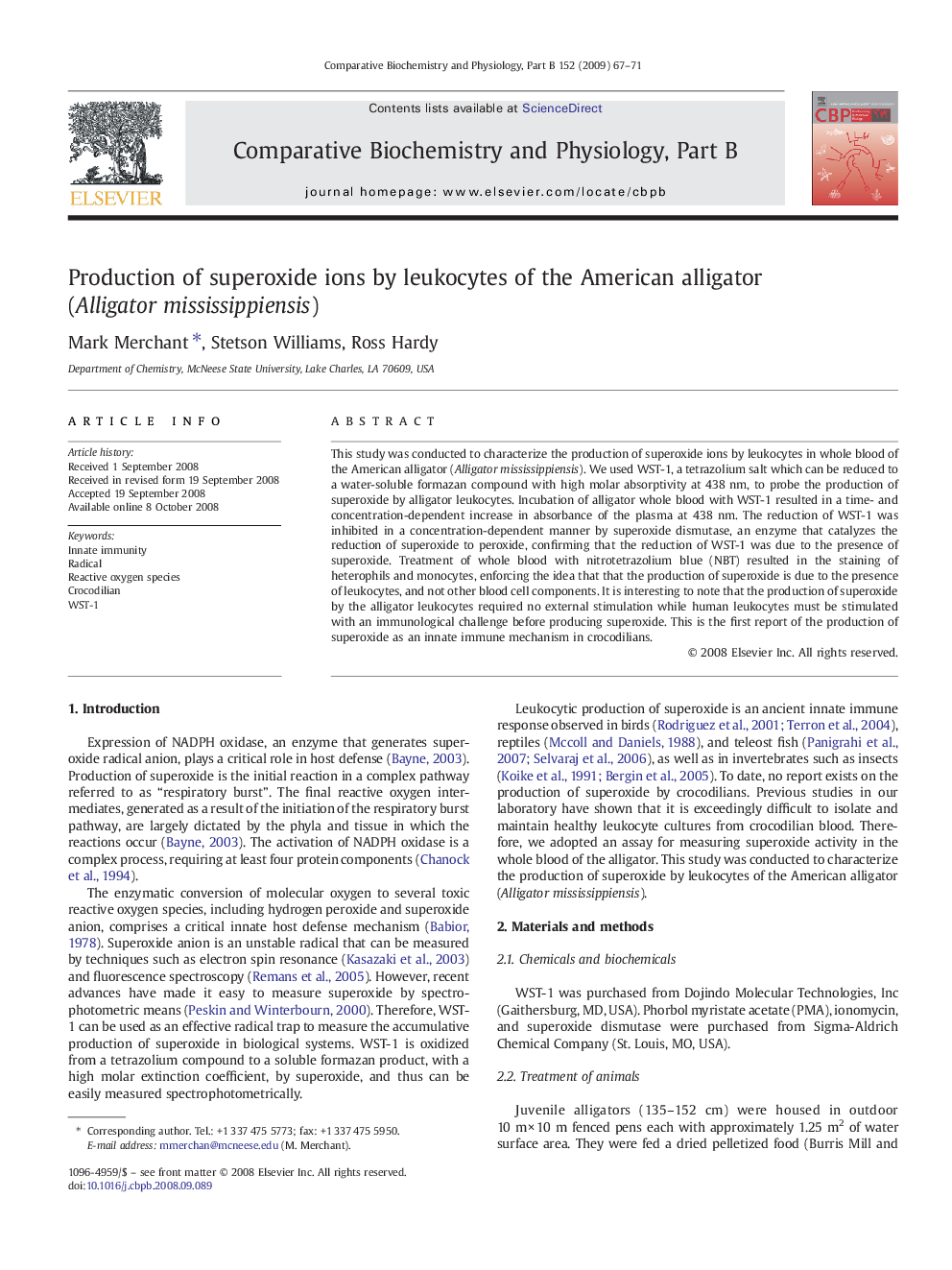| Article ID | Journal | Published Year | Pages | File Type |
|---|---|---|---|---|
| 1976487 | Comparative Biochemistry and Physiology Part B: Biochemistry and Molecular Biology | 2009 | 5 Pages |
This study was conducted to characterize the production of superoxide ions by leukocytes in whole blood of the American alligator (Alligator mississippiensis). We used WST-1, a tetrazolium salt which can be reduced to a water-soluble formazan compound with high molar absorptivity at 438 nm, to probe the production of superoxide by alligator leukocytes. Incubation of alligator whole blood with WST-1 resulted in a time- and concentration-dependent increase in absorbance of the plasma at 438 nm. The reduction of WST-1 was inhibited in a concentration-dependent manner by superoxide dismutase, an enzyme that catalyzes the reduction of superoxide to peroxide, confirming that the reduction of WST-1 was due to the presence of superoxide. Treatment of whole blood with nitrotetrazolium blue (NBT) resulted in the staining of heterophils and monocytes, enforcing the idea that that the production of superoxide is due to the presence of leukocytes, and not other blood cell components. It is interesting to note that the production of superoxide by the alligator leukocytes required no external stimulation while human leukocytes must be stimulated with an immunological challenge before producing superoxide. This is the first report of the production of superoxide as an innate immune mechanism in crocodilians.
